Citrus Growing Mistakes: How to Avoid Them
Citrus trees are relatively easy to grow in warm climates, making them one of my favorite features in my Arizona yard and garden. Still, avoiding a few key citrus-growing mistakes many home citrus growers make is crucial. By learning from these common citrus-growing mistakes, you’ll set yourself up for healthier trees and sweeter fruit for years.
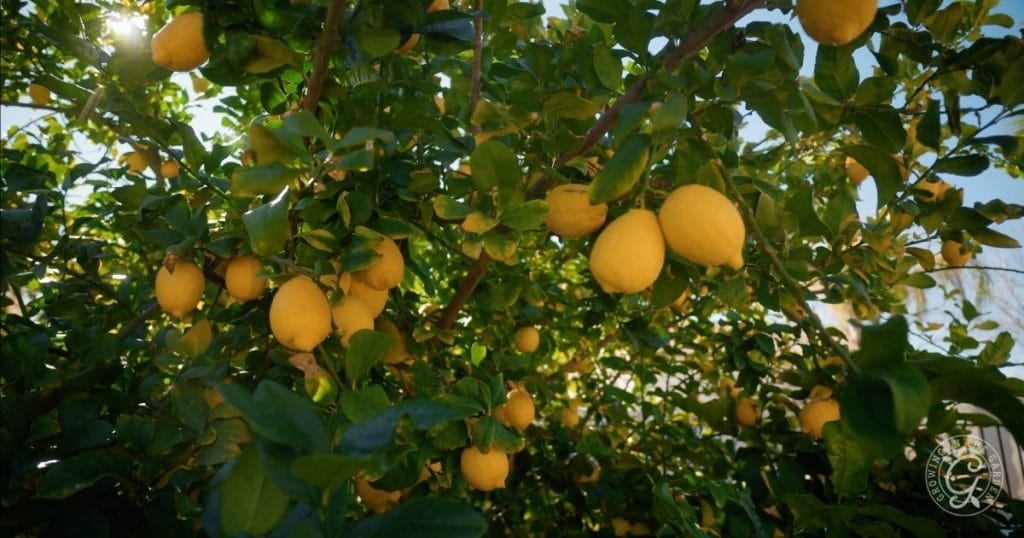
The information in this blog post about citrus growing mistakes is for citrus planted in the ground in warm climates that can grow citrus outdoors year round. If you live in a cooler climate, read this article about how to grow citrus in containers.
Article Index:
- Planting a Tree Without Sampling the Fruit
- Planting Citrus at the Wrong Time
- Choosing a Tree That’s Too Large for the Space
- Planting the Citrus Tree Too Deeply
- Amending the Planting Hole with Compost or Rich Soil
- Watering Incorrectly
- Skirting and Over-Pruning Citrus Trees
- Not Fertilizing Citrus Trees
- Exposing Citrus Bark to Direct Sunlight
- Neglecting to Harvest Fruit
Mistake #1: Planting a Tree Without Sampling the Fruit
With so many citrus varieties available, choosing one you’ll truly enjoy is important. Whenever possible, sample the fruit—this is a major advantage of buying from local growers, who often have mature trees you can taste from. Ask yourself questions like: Does the fruit have seeds? Do I like the flavor and sweetness level? Because citrus trees are long-lived and can produce hundreds of pounds of fruit, pick a variety you’ll love for years to come.
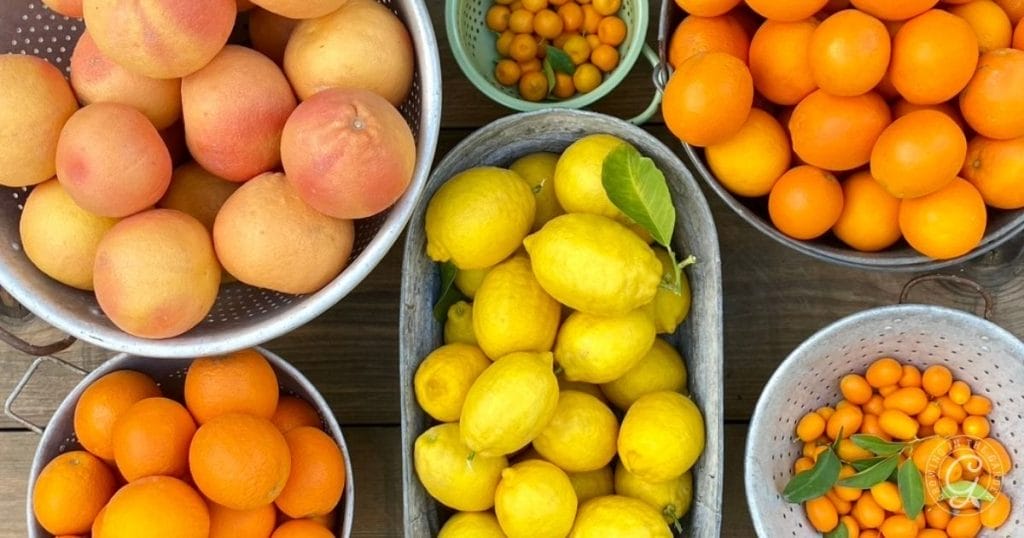
Need help to choose? This article talks about 30 different varieties of citrus. Some oranges are best for juicing, and others are best eaten fresh. Still can’t decide? This article may help you decide which type of citrus tree to plant.
Mistake #2: Planting Citrus at the Wrong Time
Citrus trees are sensitive to frost, so wait until all danger of frost has passed before planting. In hot climates—such as the low desert of Arizona—avoid waiting too long in the spring; planting earlier gives roots time to establish before extreme summer heat arrives. Citrus roots grow and develop quickly in spring, making this an ideal planting season.

In the low desert, do not plant citrus from June through mid-September, as the intense heat hinders a young tree’s ability to establish. A second planting window in the fall is possible, but newly planted citrus will be more vulnerable to frost. If cold weather threatens, protect young trees with frost coverings. Learn more about protecting citrus from frost in this guide.
Finally, be an informed buyer. Even if local retailers carry citrus year-round, planting outside the recommended window can stunt growth and reduce the tree’s long-term health.
Mistake #3: Choosing a Tree That’s Too Large for the Space
When choosing a citrus tree, picking one that will fit your available space at maturity is crucial. Over-planting can lead to crowded trees with restricted sunlight and poor airflow, which invite pests and diseases.
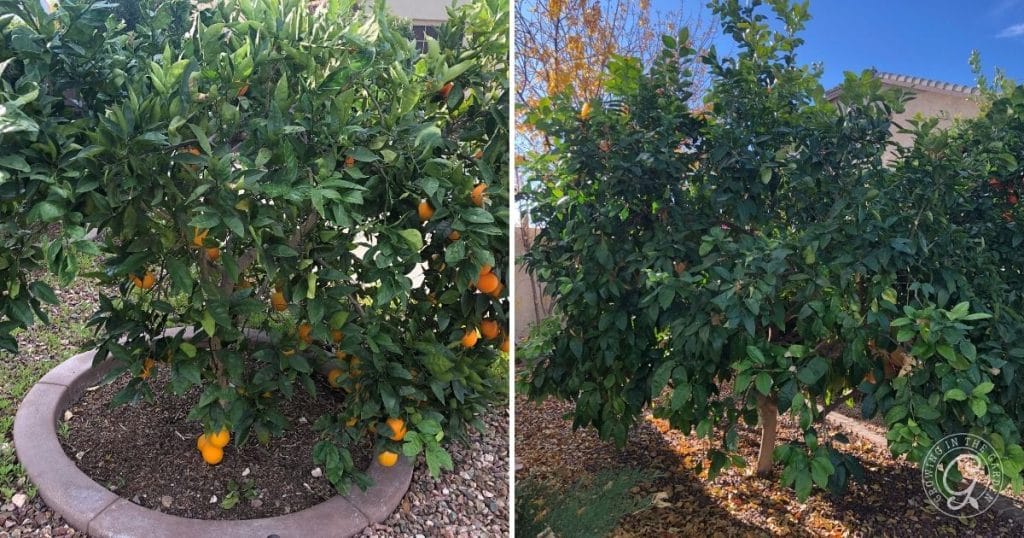
- Account for Mature Size
Ensure there’s enough distance from buildings, fences, and property lines. While young citrus trees may seem small, they can grow much larger than you might expect. - Consider Dwarf Varieties
Dwarf citrus trees produce fruit that’s just as large and flavorful as standard trees but yield about half as much. They’re often the best choice for home growers with limited space.- Dwarf varieties typically reach 10–12 ft (3–3.7 m) tall and 9–11 ft (2.7–3.4 m) wide.
- Semi-Dwarf Trees
A good option if you want more fruit than a dwarf tree provides yet have less space than a standard tree requires.- Semi-dwarfs usually grow 12–15 ft (3.7–4.6 m) tall and 12–15 ft (3.7–4.6 m) wide.
- Standard-Size Trees
Standard varieties can become quite large and need ample room to thrive.- Expect heights of 20–25 ft (6–7.6 m) and widths of 16–18 ft (4.9–5.5 m), depending on the variety.
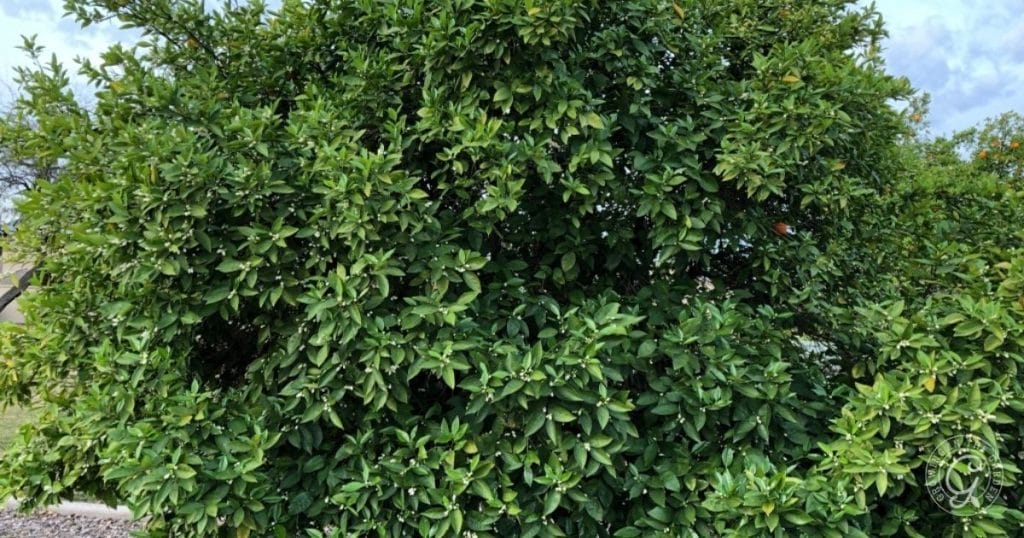
Mistake #4: Planting the citrus tree too deeply
One of the most common pitfalls when growing citrus is planting the tree too deeply. Citrus trees are typically grafted onto a specific rootstock, and the graft union (where the rootstock meets the scion) must remain above the soil line. Burying the graft union can lead to rot, disease, and the proliferation of rootstock suckers—issues that ultimately compromise the health and productivity of your tree. To avoid these problems:
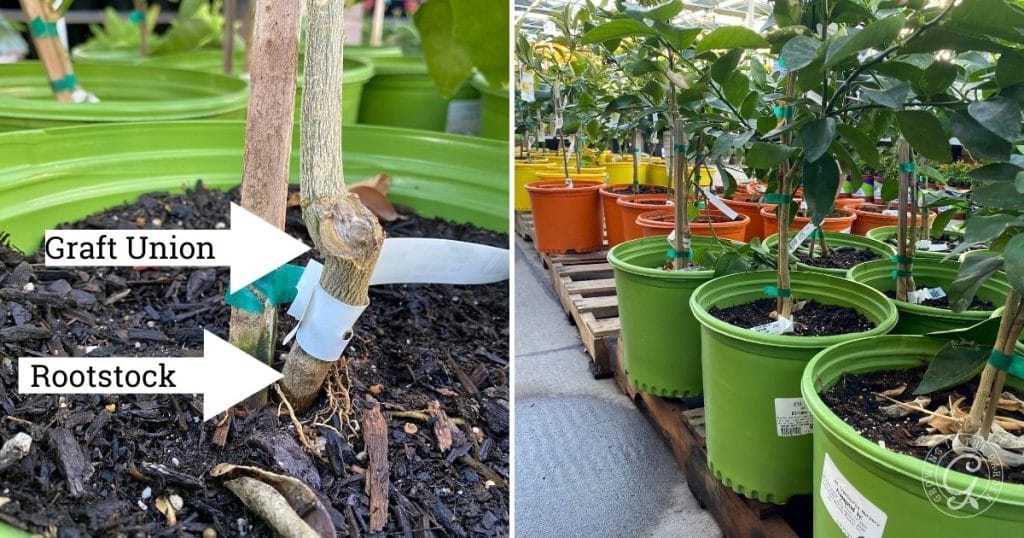
Prevent Lifetime Issues: Planting too deeply can result in a lifetime of problems such as disease, pest infestations, reduced fruit production, and eventually, tree death.
Identify the Graft: Examine the trunk to locate the graft, which should remain visible above the soil line.
Check Before Purchasing: Dig gently around the soil in a nursery pot to ensure the root ball is near the surface and hasn’t been “buried” in extra soil.
Plant at the Right Depth: Position the root ball so it’s level with or slightly above the surrounding ground, rather than matching the pot’s soil level.
Dig a Proper Hole: Make the hole as deep as the root ball (no deeper) but 3–5 times wider.
Mistake #5: Amending the Planting Hole with Compost or Rich Soil
When planting a citrus tree, it’s best to backfill the hole with the same native soil you removed. Adding compost or other nutrient-rich material directly into the hole can create a “comfort zone” where roots have everything they need in one small area, resulting in a smaller root system and a weaker tree overall.
By using native soil, you encourage the roots to spread outward in search of nutrients, which helps build a stronger, more extensive root system. If you want to improve soil health, apply compost or worm castings on top of the soil around the planting area. This way, nutrients are distributed more evenly, promoting root growth beyond the immediate planting hole. Learn more about the benefits of worm castings in this guide.
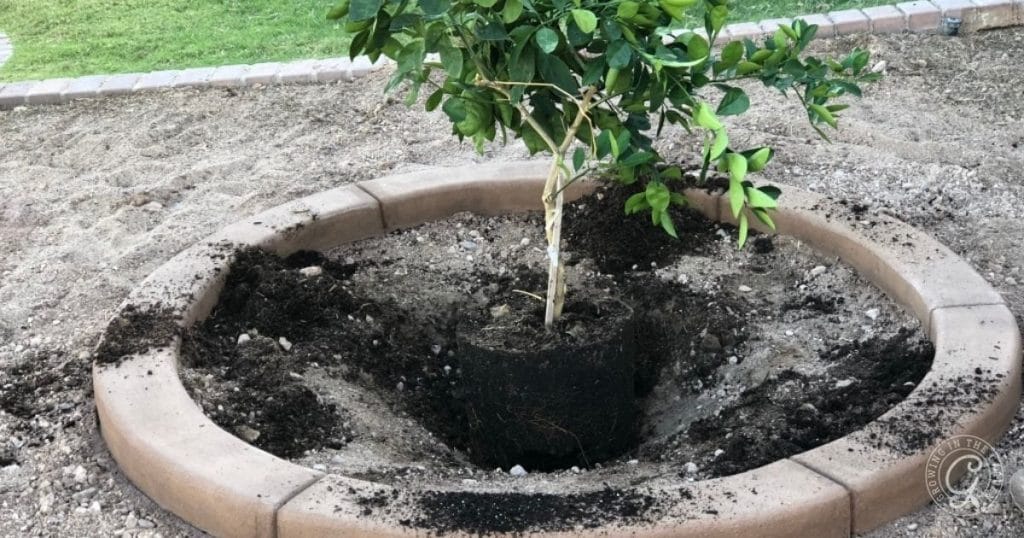
Mistake #6: Watering Incorrectly
Proper watering is crucial for maintaining healthy citrus trees, yet many common citrus problems stem from insufficient or improper watering. Here’s how to ensure your trees receive the moisture they need:
- Recognize Water Stress
- Signs of Underwatering: Drooping or inward-curling leaves.
- Signs of Sufficient Water: Leaves lie flat or curl slightly downward.
- Adjust for Tree Age
- Young Trees: Require more frequent watering due to shallower root systems.
- Established Trees: Benefit from slow, deep, and infrequent watering, encouraging roots to grow deeper in search of moisture.
- Water to the Right Depth
- Depth Target: Aim to water to a depth of at least 18–24 inches for younger trees and up to 3 feet for mature trees.
- Soil Probe: Use a probe to check how far water penetrates; it will pass through moist soil and stop when hitting dry soil. Get a soil probe here.
- Don’t Overwater
- Root Health: Citrus roots need air as well as water. Allow the top few inches of soil to dry before watering again.
- Root Rot Risk: Consistently saturated soil leads to root rot.
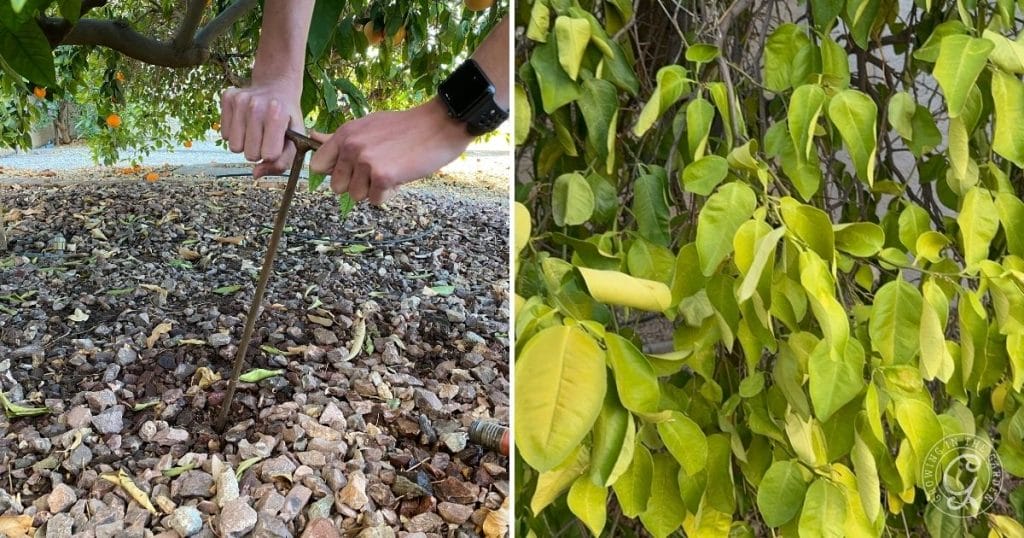
For detailed guidelines on watering intervals, consult my monthly blog posts or the University of Arizona Extension Office’s publication, Irrigating Citrus Trees. Looking for more citrus-growing tips? Check out this article for additional insights on how to grow citrus.
Mistake #7: Skirting and over-pruning citrus trees
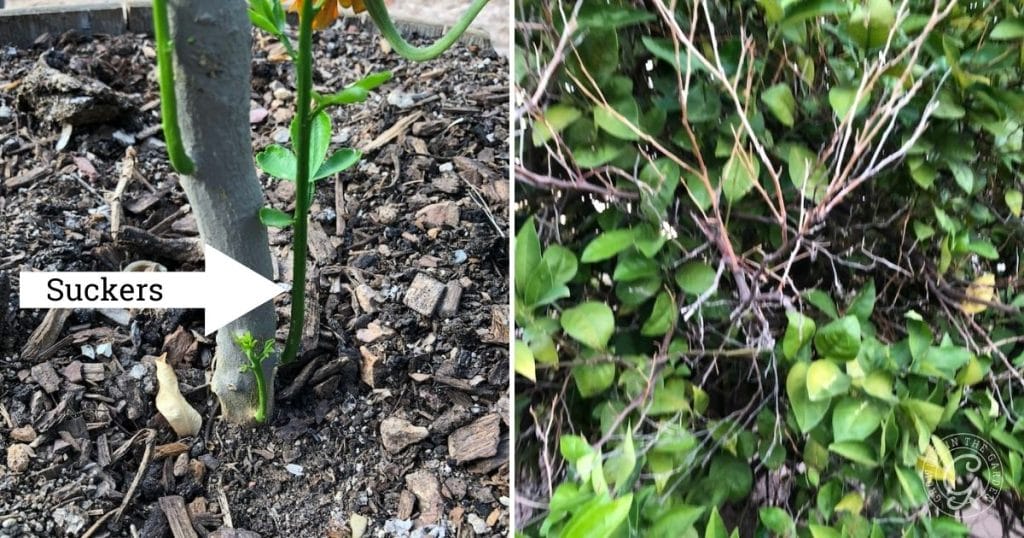
Unlike many other fruit trees, citrus typically doesn’t require extensive pruning beyond removing suckers and water sprouts. However, if you choose to prune, here are a few key guidelines to help you do it correctly.
- Manage suckers and water sprouts
Remove any shoots emerging below the graft union (suckers) as well as tall, fast-growing vertical shoots (water sprouts), which divert energy away from the main canopy. Learn more about how to identify citrus suckers in this guide. - Remove dead or crossing branches
Eliminate branches that rub against each other or show no signs of life; this promotes better airflow and prevents further damage. - Avoid pruning in summer
Summer pruning exposes the tree’s bark to intense sunlight, increasing the risk of sunburn and trunk damage. - Limit cuts to preserve fruit
Pruning healthy new growth reduces the tree’s fruit-bearing potential. Only prune when necessary. - Beware of “skirting”
Unlike deciduous fruit trees, citrus generally doesn’t need heavy pruning. Cutting off all lower limbs—known as “skirting”—is a common mistake. Those lower limbs help retain soil moisture and regulate temperature.
For more information on pruning fruit trees, check out this guide.
Mistake #8: Not fertilizing citrus trees
Citrus are heavy feeders and need sufficient soil nutrients year-round. Leaf discoloration and pale citrus leaves are often caused by nutrient deficiencies – usually iron, magnesium, and nitrogen.
Use an organic fertilizer developed for citrus trees and apply it according to package directions throughout the year. Water well before and after applying fertilizer. In the low desert of Arizona, our fertilizer application dates are typically Valentine’s Day, Memorial Day, and Labor Day.
You can also use the fruit tree feeding method of compost and worm castings described in this guide.
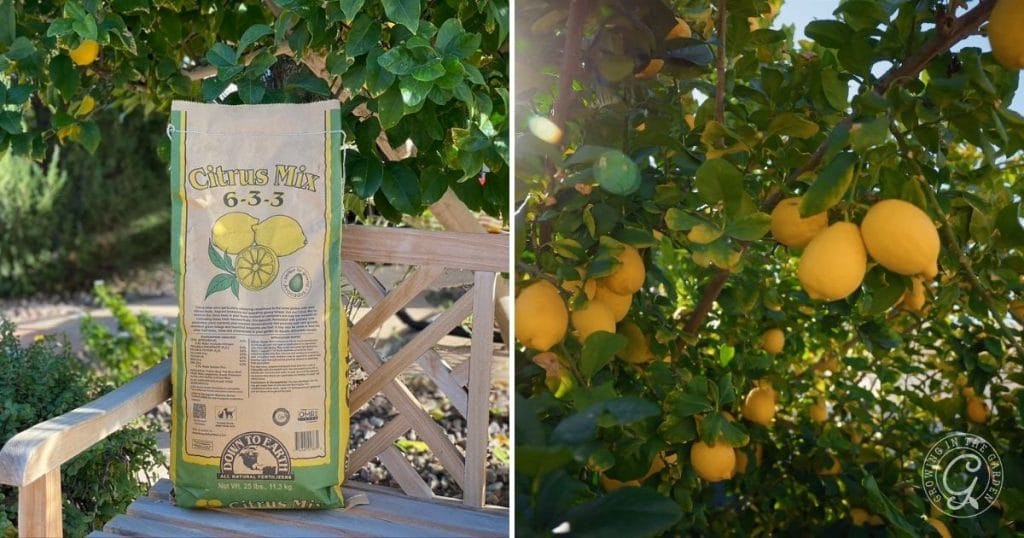
Mistake #9: Exposing Citrus Bark to Direct Sunlight
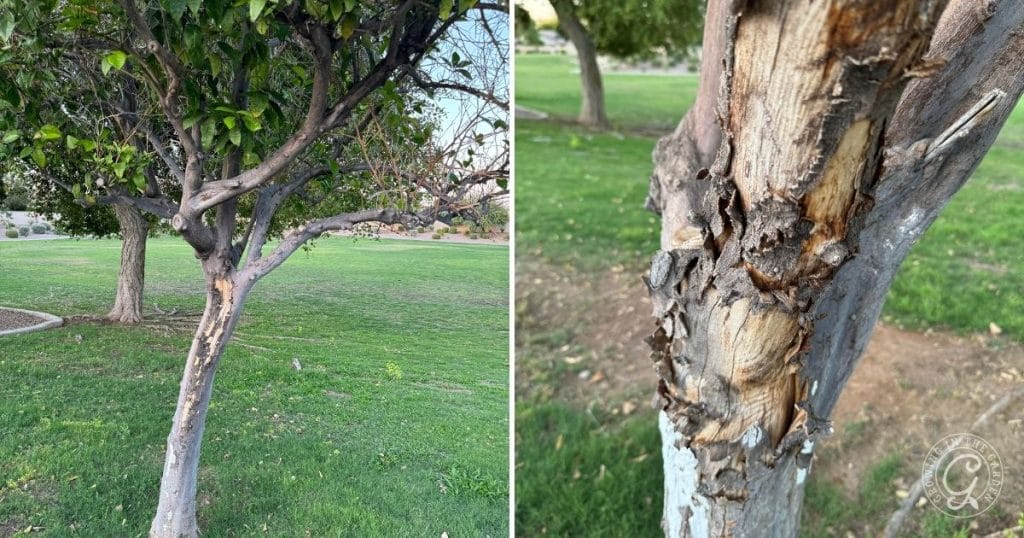
Citrus bark is highly susceptible to sunburn, which can crack and damage the trunk, inviting pests and disease. To avoid this, maintain a proper canopy—don’t “skirt” trees too high (see Mistake #7)—and protect any exposed bark from harsh sunlight. You can use a breathable, stretchable tree wrap or apply a water-based paint formulated for citrus to create a protective barrier and prevent sunscald.
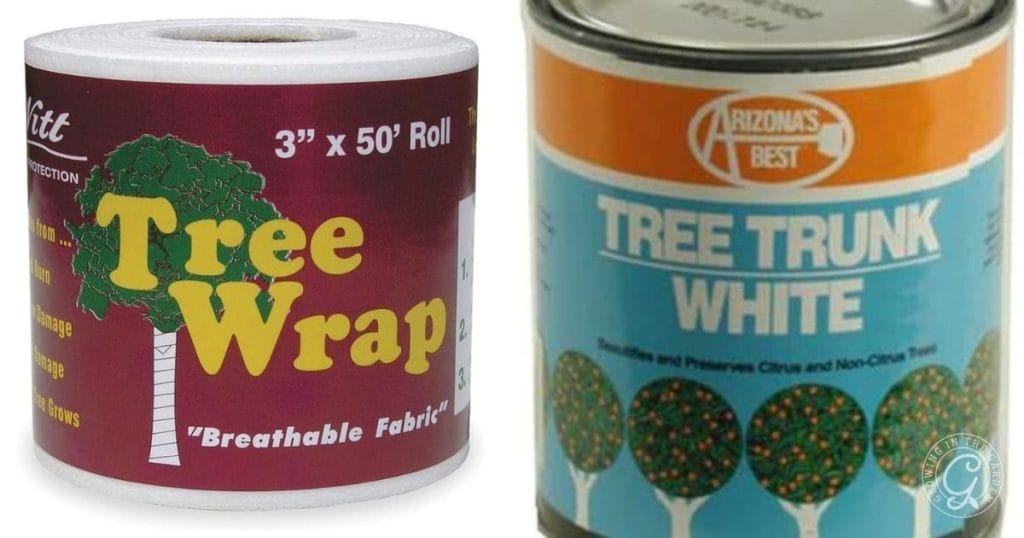
Mistake #10: Neglecting to Harvest Fruit
Leaving overripe citrus on the tree attracts insects, birds, and rodents. Citrus harvests typically begin in late fall and can extend into spring, so be sure to sample the fruit at the start of the harvest window to check for ripeness. Citrus often stays ripe on the tree for several weeks and sometimes months—take advantage of this by enjoying fresh fruit or juicing any surplus. If you have an abundance, try these tips for juicing citrus.
Once the fruit starts to soften and drop, harvest everything left on the tree and clean up any fallen fruit to discourage pests and rodents. Correcting this common oversight is easy, and your citrus trees will be healthier and more productive.
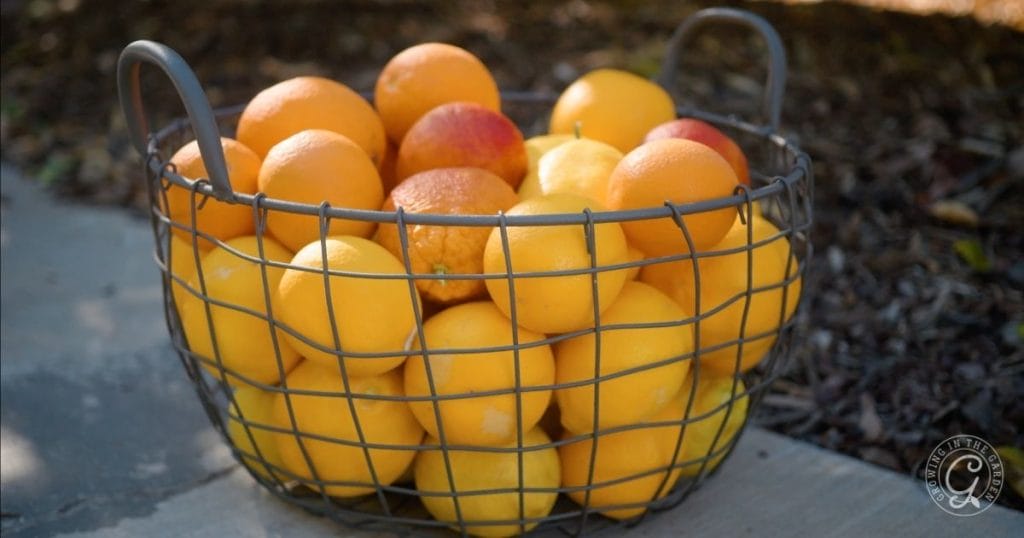

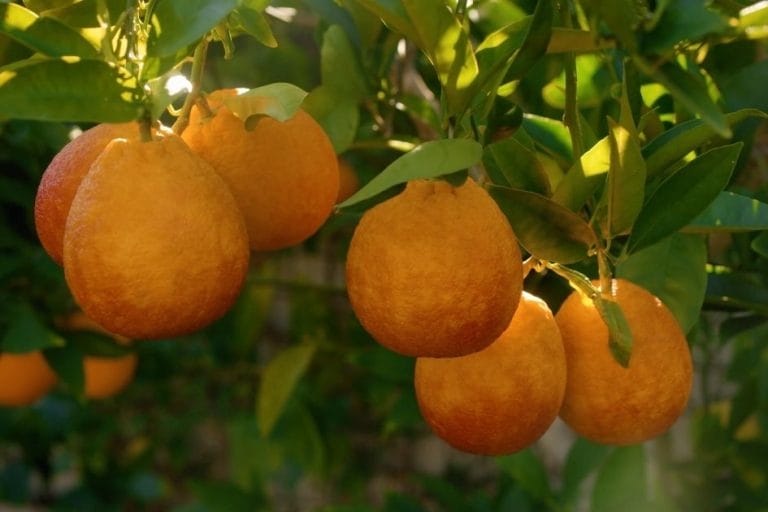
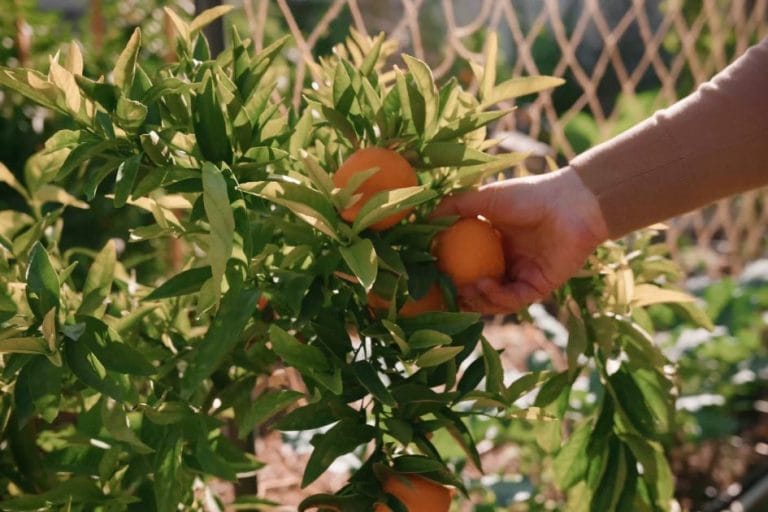
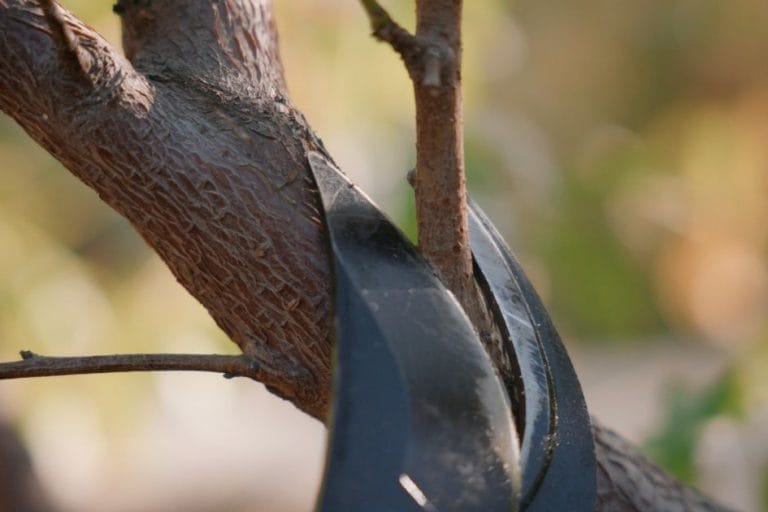

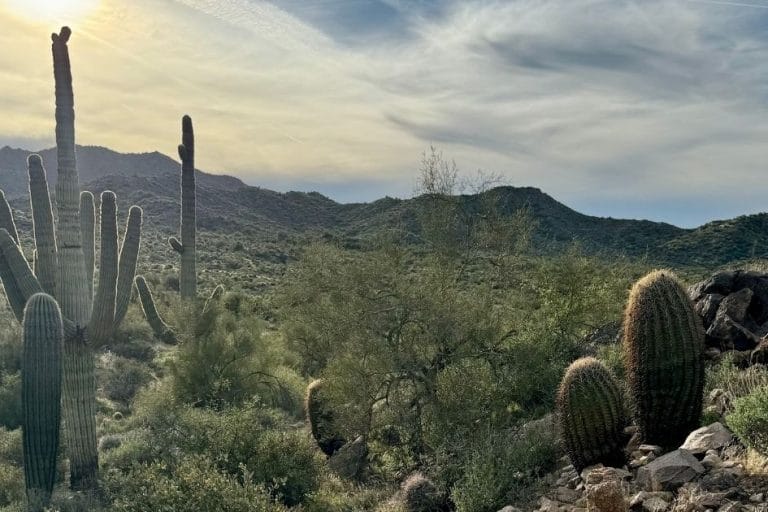
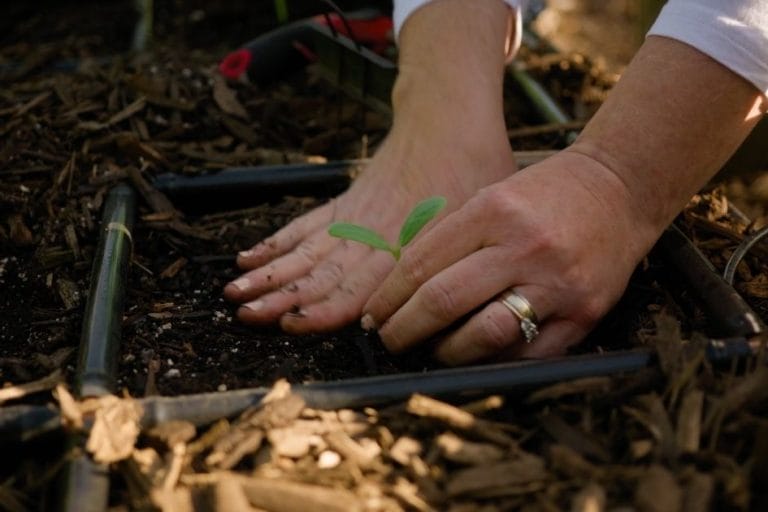
Hi Angie: I may have missed it but in your 10 citrus mistake article you left out
#10 1/2 and that is, when planting citrus, face the graft site away from where the sun will be in the summer time, in a north facing position. we used to live in the Phoenix area and this was very important in the low desert.
Great tip! I hadn’t heard that before, but of course that makes sense. Thanks for sharing.
Would you fertilize citrus grown in pots on those same dates? Or do you do something different for them?
Good question. I need to do a citrus in containers post. The best way to fertilize citrus in containers is to fertilize them about once a month while they are actively growing. Because you are fertilizing more frequently, use a little less each time. I wouldn’t fertilize during the hottest or coldest months of the year.
Thank you so much! A citrus in container post would be great I have one more question related to your comment. Would the hottest months be June through August, or does September count too? Or maybe I should just ask which months you consider the hottest and coldest? And thank you for all this information you share. I love Arizona but it’s definitely different to garden here. So it’s nice to have a site where I can reference stuff that is actually applicable to our growing situation!!
You should probably add September to that as well, wishful thinking on my part not to add it. Best of luck to you!
I love citrus. And thanks for letting us know some mistakes when planting citrus. I want to plant it in my garden soon. Keep sharing more tips and advice like this.
Unfortunately the advice not to skirt orange trees is bad. There is a growing number of deadly/damaging fungi that produces spores that hang around the soil under and around the canopies of orange trees. The only way they can access the fruit is through spores transferring from the soil to the leaves, branches and directly onto the fruit. Who knows what else is lurking on the ground that can introduce invasive species to the tree. Low hanging fruit or even fruit touching the soil provides an expressway of unwanted “life” to take up residence in the tree that wouldn’t be able to access it via the trunk such as ants which facilitate the breeding and feeding of the deadly Asian Citrus Psyllid carrying HLB that is a death sentence to citrus (why Florida was devastated). Ants make it possible for the ACP to attack the phloem producing honeydew and interfering with the flow of sap (sweetness) to the fruit which is what causes the terrible flavor in fruit while it’s slowly dying (within approx. 3 years). There is plenty of reason to absolutely skirt preferably to 2 feet above the ground. The soil does not benefit from low hanging branches and fruit. That is done with good mulch. Low hanging fruit is also likely to be substandard in appearance and in flavor because it’s nutrients and water comes from the core of the tree, not the ground. Too far to travel. The watering system can cause splashing of the water-laden soil which splashes the mold spores onto the tree parts. There is not much we can do to control rain splash, but at least we can help with the skirting. I have lived and observed and learned on our grove for 50 years. We are a Commercial Orange Grower in CA battling costly damage of fruit that is not noticed until after reaching the marketplace which is what happens with brown rot. Furthermore, spores causing blue and green mold, black mold and various other serious attacks on our fruit also gain access through touching the soil or water splash. Failing to skirt up to 2 feet is a significant cause of this. The fruit will appear aesthetically pleasing on the outside, but after harvest the rot that begins inside the fruit will make its way out and affect all the other fruit in the containers. Horrible loss all around. You can confirm this information just about anywhere citrus organization post information. The only argument among scientists and scholars to this is how high to skirt. Other arguments are pretty much gardeners who have a handful of trees. That’s fine, but it is a serious duty to skirt, and if you see groves with low hanging fruit/branches, you can be sure they don’t research enough to protect their trees. Skirting also relieves pressure on the supporting branches so they can support more of the quality fruit that grows from stronger branches. Oranges dangling from those long single scraggly strands of water sprout growths are using up vital nutrients and water for nothing good in return and should be removed. These are my conclusions based on my knowledge and experience to confirm it, but I am not recognized as an expert. I hope you find this to be a fascinating way to look at reasons for skirting. Thanks. Love those oranges to death!
Thank you for taking the time to leave this very informative comment. I appreciate the additional insight. I was taught not to skirt trees in my Arizona master gardener courses through the University Extension Office. Your reasoning and experience make sense. Thanks for sharing.
This is a great, helpful article. The only thing I was left wondering is what kind of surface irrigation hoses should we use for our newly-planted citrus trees. We live near Florence, AZ.
Hi Helen, Deep watering is best. If you have flood irrigation that is ideal. Otherwise you can use bubblers or drip irrigation to water. Whichever method you use, run it long enough to water to a depth of 2-3 feet.